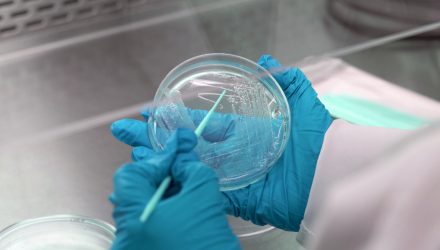The S&P 500 Biotech index rose as much as 25% last year after falling as low as 8% during the apex of last year’s sell-offs. Now, downward pressure is helping leveraged inverse funds like the Direxion Daily S&P Biotech Bear 3X Shares (LABD).
“Lossmaking pharmaceutical and biotech companies dominate the list of US stocks most owned by exchange traded funds following a dramatic buying spree in 2020,” a Financial Times article noted.
ETFs have been feeling the pangs of the downtrodden biotech sector. Thematic funds, in particular, have been experiencing the most pain.
“The unprofitable companies are particularly dominant in thematic ETFs, which focus on narrow investment areas, particularly those run by Ark Invest, the rapidly growing asset manager focused on disruptive technology,” the FT article noted further. “As many as 13 of the 50 stocks for which ETFs accounted for the largest chunk of free float ownership at the end of last year are pharmaceuticals companies, according to analysis by Citi.”
Thematic funds have seen a substantial rise as the ETF space has grown exponentially over the years.
“The growth of more targeted thematic ETFs in 2020 had a profound impact on the data,” said Scott Chronert, global head of ETF research at Citi. “2020 marked a very important inflection. We are increasingly wary of individual stock impacts where more focused products dip into less liquid names.”
The aforementioned sector’s S&P 500 Biotechnology index started the year strong, rising close to 9% before subsequently falling and hanging on to a 1.63% year-to-date gain in 2021.
Banking on the Biotech Bears?
LABD is up 17% the past month, allowing traders to take the opposite end of the long equation. LABD seeks daily investment results, before fees and expenses, of 300% of the inverse of the daily performance of the S&P Biotechnology Select Industry Index.
The fund, under normal circumstances, invests in swap agreements, futures contracts, short positions, or other financial instruments that, in combination, provide inverse (opposite) or short leveraged exposure to the index equal to at least 80% of the fund’s net assets (plus borrowing for investment purposes). The index is designed to measure the performance of the biotechnology sub-industry based on the Global Industry Classification Standards (‘GICS’).
For more news and information, visit the Leveraged & Inverse Channel.









